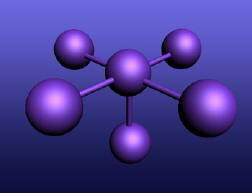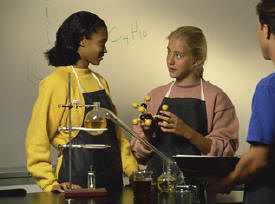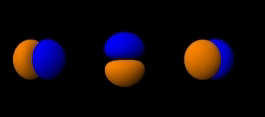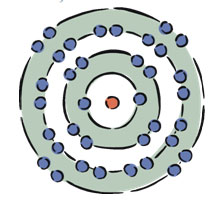IONS,
MOLECULES, AND COMPOUND - LAB
|

Balls represent elements
|
Direct
observation is something that we can perform everyday. If you see an
object like a car, you do not have to do any further investigation. You
can touch and see it directly and you can identify it without a doubt.
When you wake up in the morning there might be the smell of coffee
brewing. You do not have to actually see it but your sense of smell
confirms the product. However, you would still have to confirm by
actually seeing or tasting the coffee.
 Birds
may be chirping outside and you know there are birds by the sound. Do
you have to confirm by seeing them to know they are there? Yes,
because it could be an audio recording, the television, or person that
can imitate birds. Confirmation is needed to be absolutely sure. Birds
may be chirping outside and you know there are birds by the sound. Do
you have to confirm by seeing them to know they are there? Yes,
because it could be an audio recording, the television, or person that
can imitate birds. Confirmation is needed to be absolutely sure.
|

Representation of orbitals
|
What
happens if you cannot see, touch, feel, or smell? Can you still
determine what it is? This is the case of ions and molecules because
you cannot directly see anything that small. We can indirectly see
them through x-rays, particle accelerators, and some very high powered
microscopes. How
|

Bohr model of an atom
|
the
atoms actually look like and how the electrons move is still very
“cloudy.” So chemists and physicists develop models to try and show the
evidence they are see. In the Unit on “Atomic Theory” we will look at
the historical development of how we think an atom actually works.
Models
help humans to think about how the actual might look like if our eyes
could see substances that small. Analogical models helps explain
objects and processes that we cannot readily observe. Hypothetical
models help us try to visualize how something works even if we
cannot see it. |